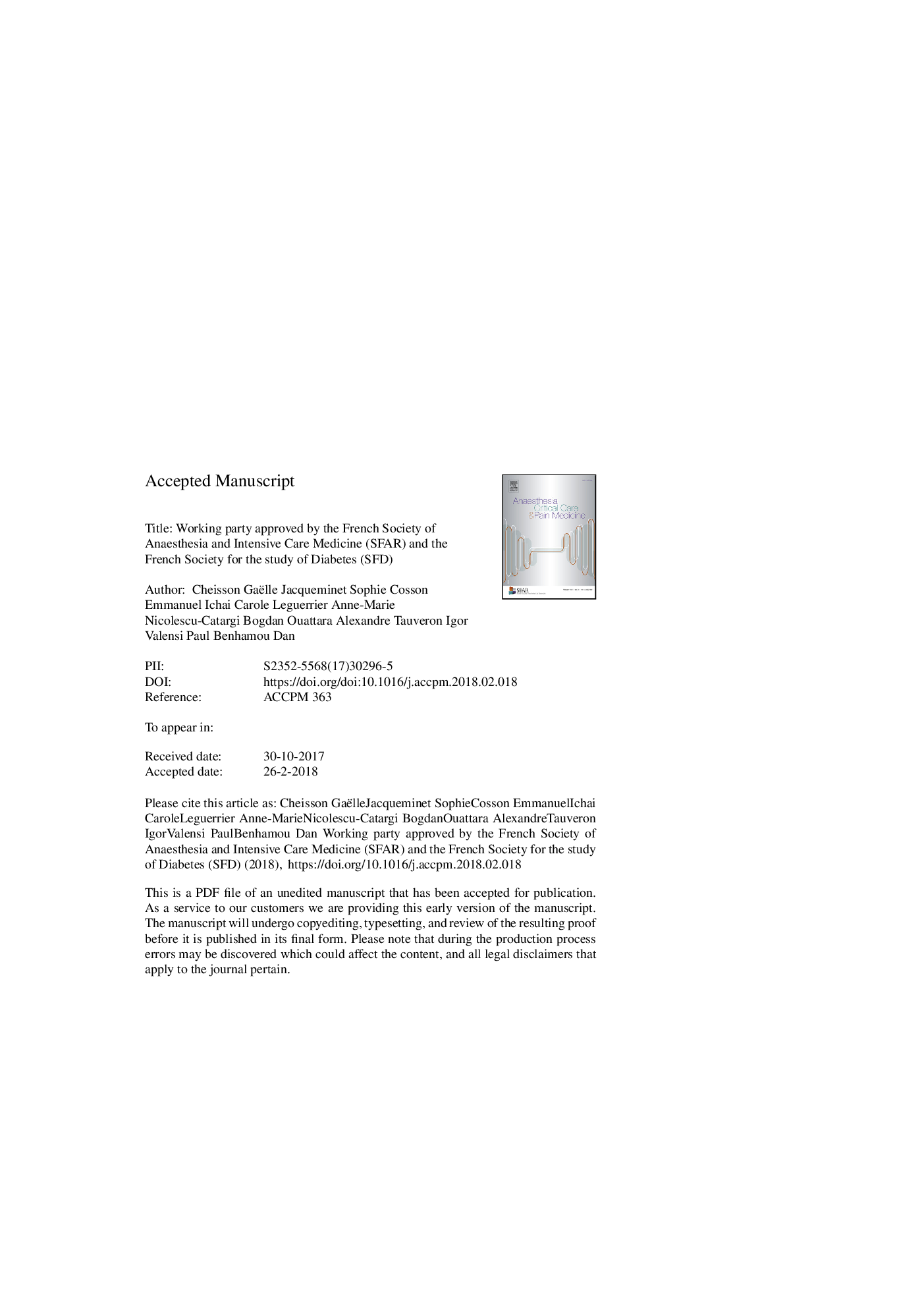| کد مقاله | کد نشریه | سال انتشار | مقاله انگلیسی | نسخه تمام متن |
|---|---|---|---|---|
| 8609139 | 1567096 | 2018 | 15 صفحه PDF | دانلود رایگان |
عنوان انگلیسی مقاله ISI
Perioperative management of adult diabetic patients. Intraoperative period
ترجمه فارسی عنوان
مداخله درمانی بیماران دیابتی بالغ. دوره ای درگیر
دانلود مقاله + سفارش ترجمه
دانلود مقاله ISI انگلیسی
رایگان برای ایرانیان
کلمات کلیدی
دیابت، دوره عملی درمان انسولین، پمپ انسولین، کنترل گلیسمی، مقاومت به انسولین،
موضوعات مرتبط
علوم پزشکی و سلامت
پزشکی و دندانپزشکی
بیهوشی و پزشکی درد
چکیده انگلیسی
Perioperative hyperglycaemia (> 1.80 g/L or 10 mmol/L) increases morbidity (particularly due to infection) and mortality. Hypoglycaemia can be managed in the perioperative period by decreasing blood sugar levels with insulin between 0.90 and 1.80 g/L but it may occur more frequently when the goal is strict normoglycaemia. We propose continuous administration of insulin therapy via an electronic syringe (IVES) in type-1 diabetes (T1D) and type-2 diabetes (T2D) patients if required or in cases of stress hyperglycaemia. Stopping a personal insulin pump requires immediate follow on with IVES insulin. We recommend 4 mg dexamethasone for the prophylaxis of nausea and vomiting, rather than 8 mg, combined with another antiemetic drug. The use of regional anaesthesia (RA), when possible, allows for better control of postoperative pain and should be prioritised. Analgesic requirements are higher in patients with poorly controlled blood sugar levels than in those with HbA1c < 6.5%. The struggle to prevent hypothermia, the use of RA and multimodal analgesia (which allow for a more rapid recovery of bowel movements), limitation of blood loss, early ambulation and minimally invasive surgery are the preferred measures to regulate perioperative insulin resistance. Finally, diabetes does not change the usual rules of fasting or of antibiotic prophylaxis.
ناشر
Database: Elsevier - ScienceDirect (ساینس دایرکت)
Journal: Anaesthesia Critical Care & Pain Medicine - Volume 37, Supplement 1, June 2018, Pages S21-S25
Journal: Anaesthesia Critical Care & Pain Medicine - Volume 37, Supplement 1, June 2018, Pages S21-S25
نویسندگان
Gaëlle Cheisson, Sophie Jacqueminet, Emmanuel Cosson, Carole Ichai, Anne-Marie Leguerrier, Bogdan Nicolescu-Catargi, Alexandre Ouattara, Igor Tauveron, Paul Valensi, Dan Benhamou,
